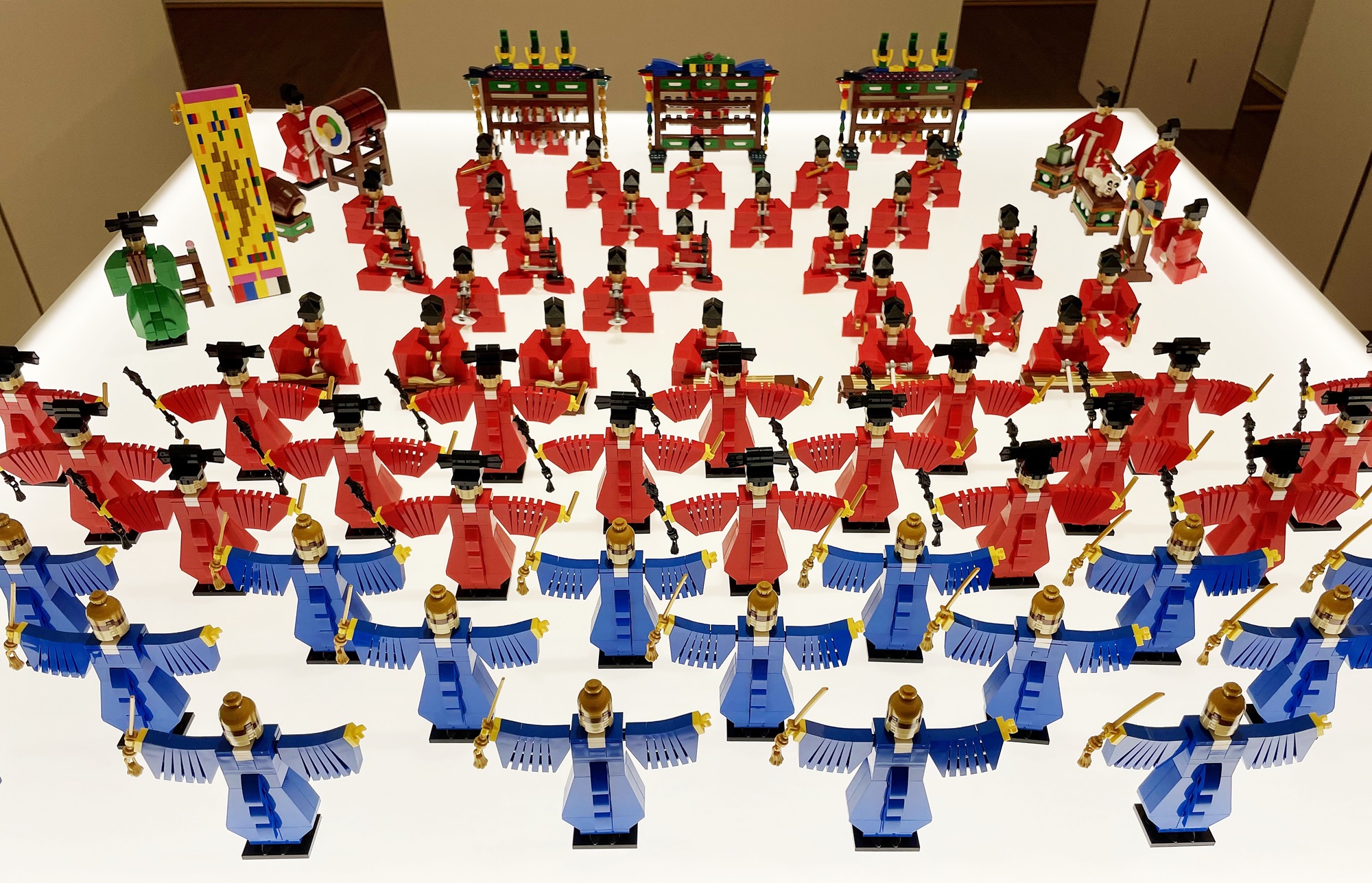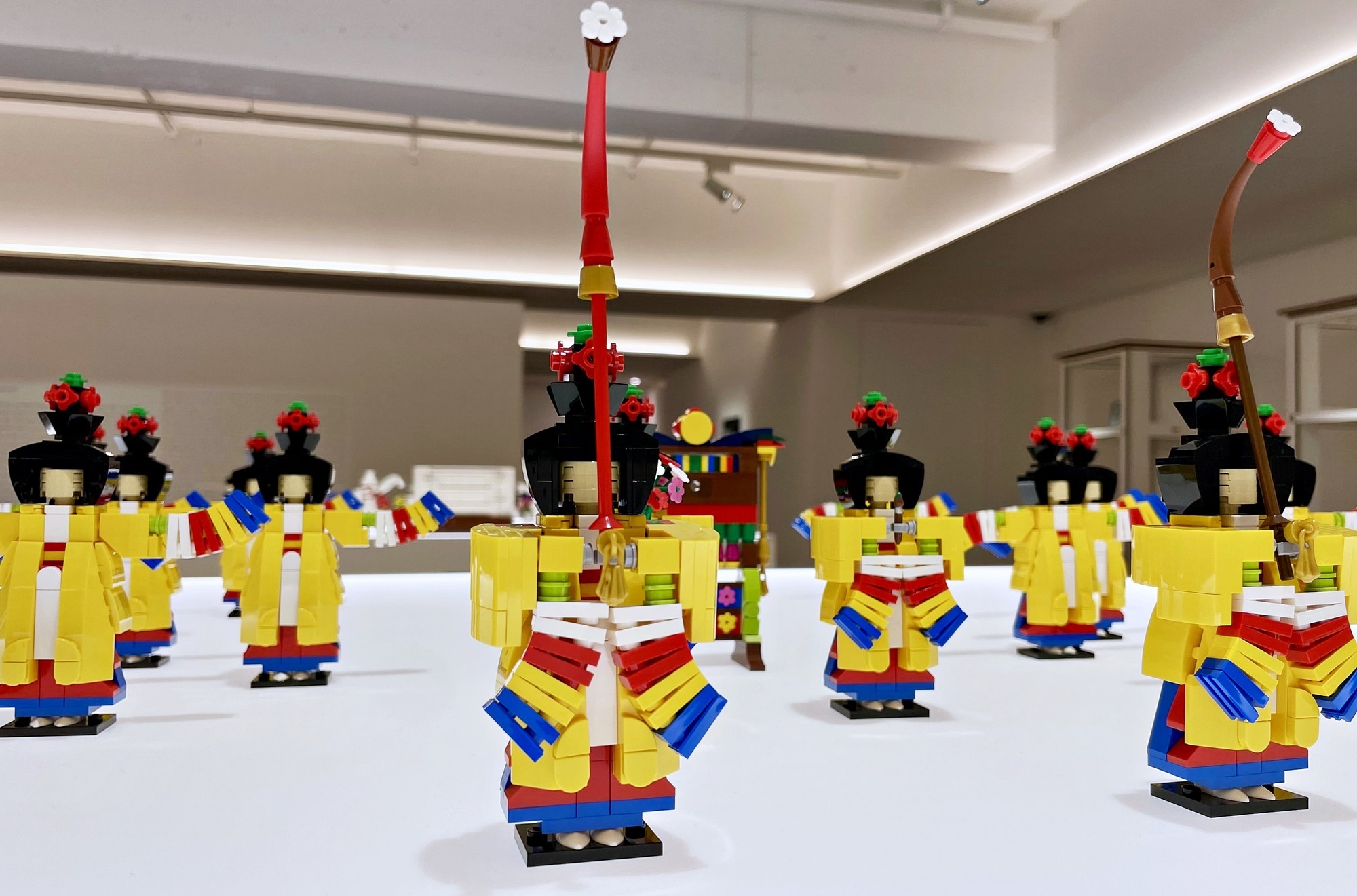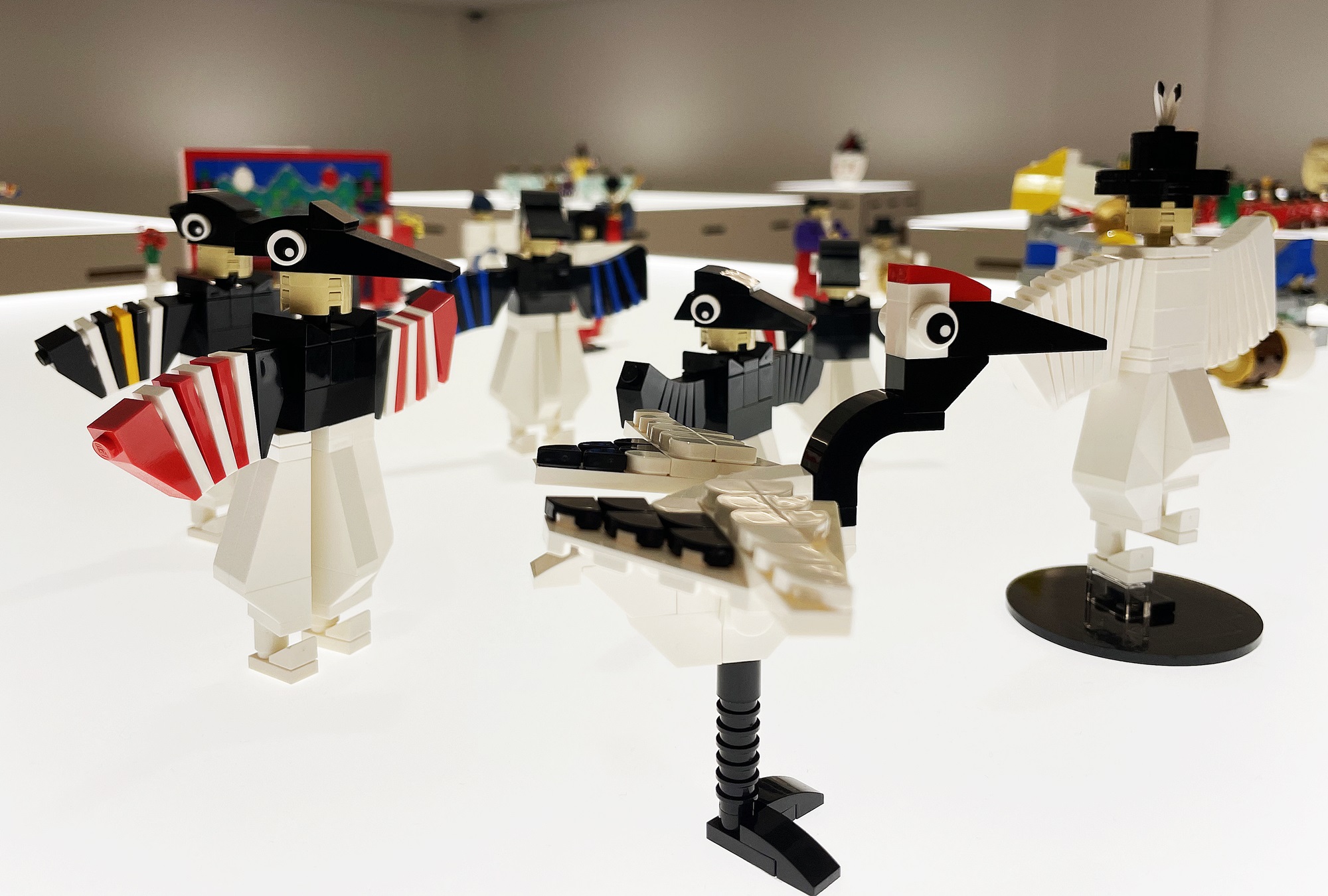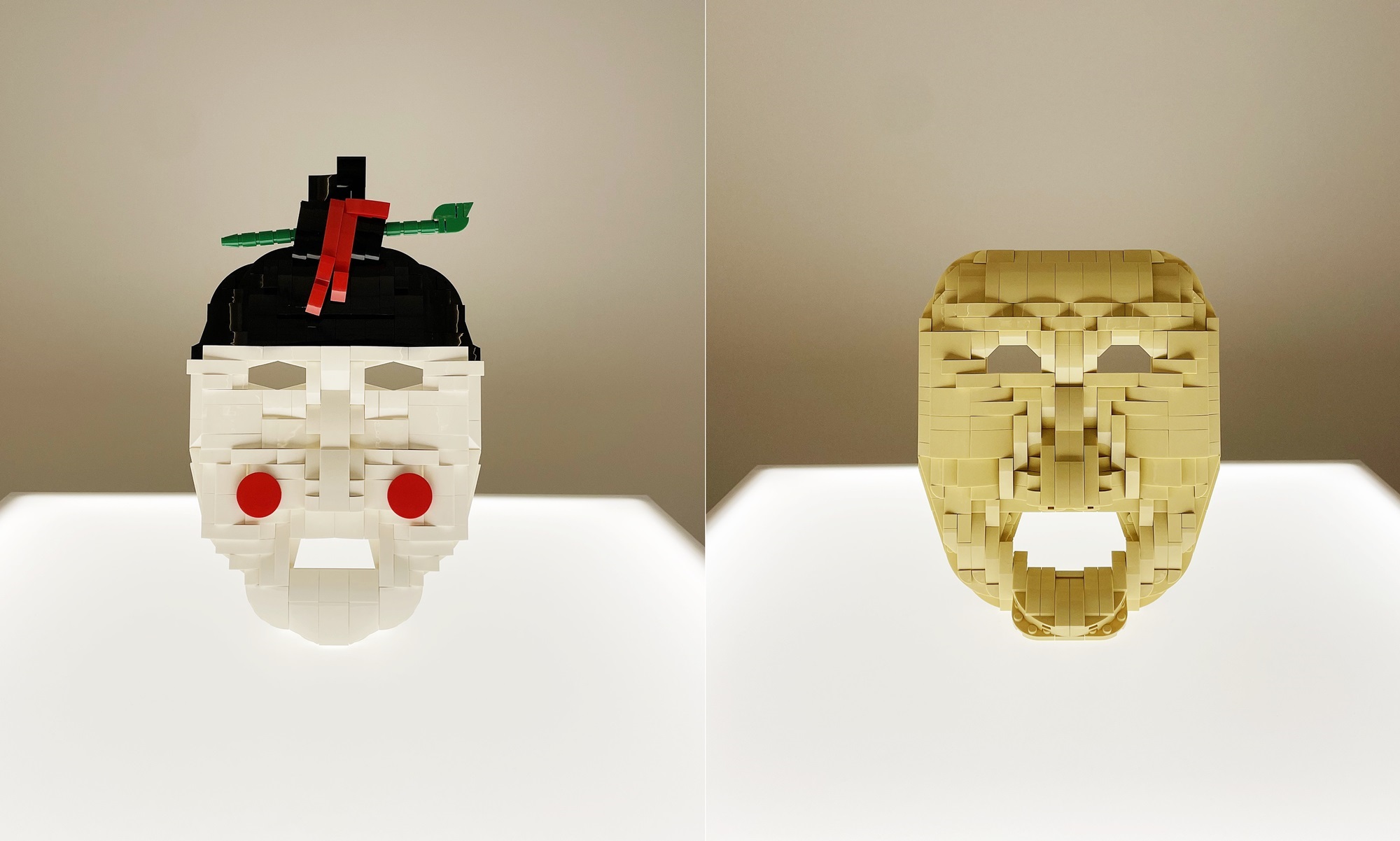
Opened on Oct. 11, the exhibition "Colin Jin's HEstorical Lego" is being held at Moryham Exhibition Center in Seoul's Jung-gu District. Shown is a Lego set featuring Jongmyo Jeryeak, or royal ancestral ritual music at Jongmyo Shrine from the Joseon Dynasty in Seoul.
By Xu Aiying
Photos = Xu Aiying
Cultural heritage displaying the nation's elegance and spirit have been interpreted as works of art using colorful Lego blocks, ranging from the UNESCO World Heritage Jongmyo Jeryeak, or royal ancestral ritual music at the Jongmyo Shrine of the Joseon Dynasty in Seoul, to pogurak, or a traditional dance based on a ball game, from the Goryeo Dynasty.
The exhibition "Colin Jin's HEstorical Lego," which was opened on Oct. 11 at Moryham Exhibition Center in Seoul's Jung-gu District, feature the country's cultural heritage made of the Danish blocks. Lacking any special purpose or manuals, the over 300 works shown hand made by Lego artist Jin, whose real name is So Jin-ho, show a simplified and clear beauty of both tangible and intangible elements of Korea.
Korea.net on Oct. 18 visited the exhibition crowded with visitors to get a closer look at the unique combination of the blocks and Korean cultural heritage. Children made a work resembling the Jongmyo Jeryeak with Lego blocks they brought from home. Foreign visitors were impressed to see Legos used in different ways as a piece normally used for a duck's foot appeared as the hat of a court official and one for a beast's tooth turned into shoes sticking out of a woman's Hanbok skirt.
"I began to my works after asking myself 'Why are there no Legos showing Korea's beauty' when Lego replicas of the Eiffel Tower in France, the Great Wall of China and Himeji Castle in Japan are on sale," the artist said at the exhibition. "I create my art to convey the uniqueness of our country's symbolic elements so that anyone can easily and clearly understand them."

These Lego miniatures display pogurak, a traditional dance based on a ball game from the Goryeo Dynasty in which dancers try to throw a ball through a round hole on the middle of a door.
As a child, Jin said, he was lucky to be the first to play with new toys thanks to his father, who ran a toy company. Since age 25, he has steadily worked with Legos for more than 20 years.
The exhibition's highlight is the Lego version of Jongmyo Jereak, accompanied by other works featuring the country's history and tradition like hangmu (crane dance), pansori (narrative lyrical opera) and seungmu (Buddhist monk's dance).
Jin said, "I found it hard to express the beautiful elements in traditional Korean heritage given the limitations of Lego blocks as well as curves in traditional art since the blocks are nearly all straight."
"An important part was my adaptation of obangsaek (traditional five colors representing the five cardinal directions of black, white, yellow, red and blue) while working," he added. "Along with studying history through extensive research of data, I based my designs on a rule of limiting excessive expressions and use of colors."

Rectangular-shaped Lego blocks used to display hangmu (crane dance) exquisitely express the round-shaped sleeves of the dancers.
On memorable reactions from visitors, Jin said, "Foreign as well as Korean visitors are amazed to see works of art made with Lego blocks that they're familiar with, and their reactions are that Korean cultural heritage is easy to accept because it's intuitively accessible."
Planning to create works themed on nongak (traditional farmers music), he said his ultimate goal is to create a Lego version of the 1795 Hwaseong Royal Parade of King Jeongjo, the 22nd Joseon monarch, to Suwon Hwaseong Fortress in Suwon, Gyeonggi-do Province, that marked the 60th birthday of the king's mother with an entourage of thousands.
Jin added that he hopes to capture human history and evolution in the most Korean style possible and close to nature.
The exhibition runs through Oct. 25 with free admission.

On the left is a gaksital (bridal mask) and on the right a hahoetal (Hahoe mask) made of Lego blocks.